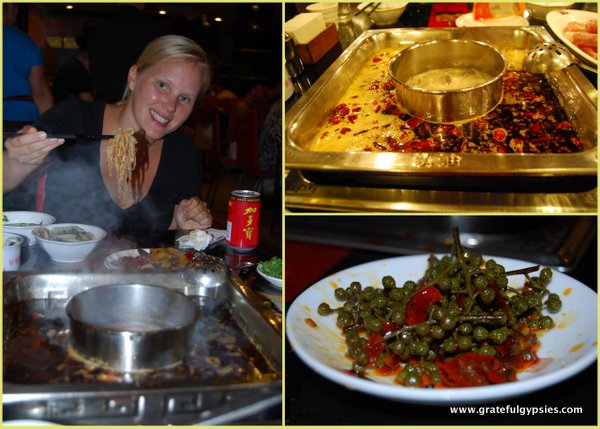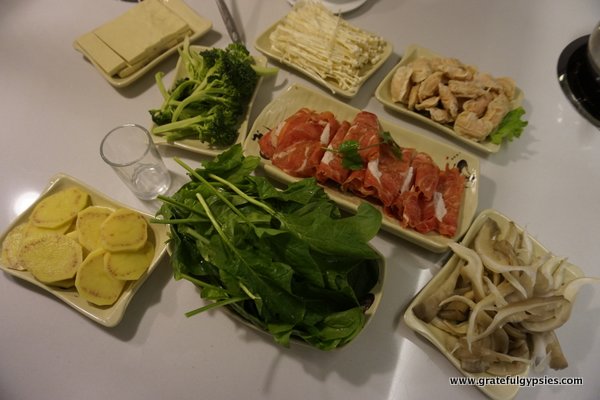Warm Up with Chinese Hot Pot Posted by sasha on Dec 18, 2017 in Culture
Winter is in coming, and temperatures are falling fast. This is especially true in the northern part of China – it’s already hovering around 0 degrees Celsius in Beijing and it’s far, far below zero in the provincial capital of Harbin. Coupled with the awful air pollution, this can lead to a serious sense of winter depression. When it hurts to step outside, and you can practically chew the air, nothing looks better than crawling back into bed. Luckily, there’s something that will warm you right up on even the coldest days. No, I’m not talking about bai jiu (白酒 – bái jiǔ); I’m talking about hot pot (火锅 – huǒ guō). This communal dining experience is tons of fun, and it’s sure to cure your winter blues, at least temporarily.
Origins
There is much debate in China about the origins of hot pot. Some say it made its way into the Middle Kingdom from Mongolia (蒙古 – méng gǔ), some insist it comes from Sichuan province, while even others claim it’s a northern China thing. While we may never know exactly where it all started, hot pot has been a staple in the Chinese diet for about a thousand years, and it only gets more and more popular as time goes on.
Regional Varieties
Of course, each region of China has its own style of hot pot. Perhaps the most famous is the version found in Chongqing and Sichuan. Known as “numb and spicy” (麻辣 – má là), the liberal use of Sichuan peppercorns (花椒 – huā jiāo) and other chillies make it an intense dining experience. Up in the north, you’re sure to find plenty of picked vegetables (酸菜 – suān cài), and in coastal regions there’s likely to be more seafood (海鲜 – hǎi xiān). It’s hard to go wrong with hot pot, and trying it out in different areas of China ensures a slightly different experience each time.
A Night of Hot Pot
To give you more of an idea about the hot pot experience, here’s what a typical night out in a restaurant that serves it is like:
First, you sit down at your table and choose your broth. Many hot pot restaurants come equipped with pots that have a divider in the middle so you can choose two styles. The idea here is to get one that is spicy and one that isn’t.
Next up, you peruse the menu and order up your favorite ingredients. For a typical hot pot meal, you may get: lamb, potatoes, mushrooms, cabbage, glass noodles, and small dumplings. Of course, there are tons of options, so get creative!
Once your order is in, you set about making your dipping sauce. The main ingredient here is a kind of sesame paste (麻酱 – má jiàng), to which you’re free to add a variety of things, such as: garlic, chili oil, green onions, coriander, and so on.
When your plates of food arrive and the broth starts boiling, it’s time to get cooking. Hot pot is a very social meal, so get some beers and chat while you wait.
After a big meal of hot pot and a few drinks, you’ll forget about the whole winter thing that is going on outside. That is, of course, until you eventually have to leave the restaurant and head back out into the bitter cold. Maybe you’d better pick up a bottle of bai jiu after all.
Watch this short video on Old Beijing hot pot.
你吃过火锅吗
nǐ chī guò huǒ guō ma
Have you eaten hot pot?
你喜欢吃火锅吗?为什么?
nǐ xǐ huān chī huǒ guō ma? wèi shén me?
Do you like to eat hot pot? Why?

Build vocabulary, practice pronunciation, and more with Transparent Language Online. Available anytime, anywhere, on any device.







Comments:
Bagus Aji Santoso:
I thought the main meat is a zhu rou